For most patients that have had surgery in the past and rehabilitation thereafter, are far too familiar with weight-bearing restrictions and how it can affect their mobility. So, what are these weight-bearing restrictions? How long do I have to stay on weight-bearing restrictions?
Why the need for weight-bearing restrictions? In this blog, I will be answering these questions along with detailing the most common types of weight-bearing restrictions seen in a hospital setting. But first, let’s take a look at why weight-bearing restrictions are implemented.
According to an article Current Advances in Training Orthopaedic Patients to Comply with Partial Weight-Bearing Instructions patients are placed on weight-bearing restrictions for (2) main reasons: to protect the surgical site/implant, and to improve bone healing at the surgical site.
Most weight-bearing restrictions are implemented under the assumption that increased load on a surgical site will lead to hardware failure and increased fractures. Therefore, the rationale behind the concept is to allow proper healing and bone fusion to occur.
There are several reasons why a doctor or surgeon may place a patient on weight-bearing restrictions. Other factors that are considered include the patient’s age, comorbidities, severity of injury, and reoccurrence of injury
Although weight-bearing restrictions are implemented to protect the surgical site, there is also evidence that suggests weight-bearing through a joint not only promotes bone growth but also increases the overall healing rate and reduces the morbidity caused by decreased activity to the joint.
As a result, doctors or surgeons will often promote a combination of the two with restricted weight-bearing for a few weeks, followed by a gradual increase in weight-bearing to the affected area.
Property of rehaballey.com
In the next few paragraphs, I will be discussing the most common weight-bearing precautions seen in the hospital setting, as well as the implications for each.
NON-WEIGHT BEARING
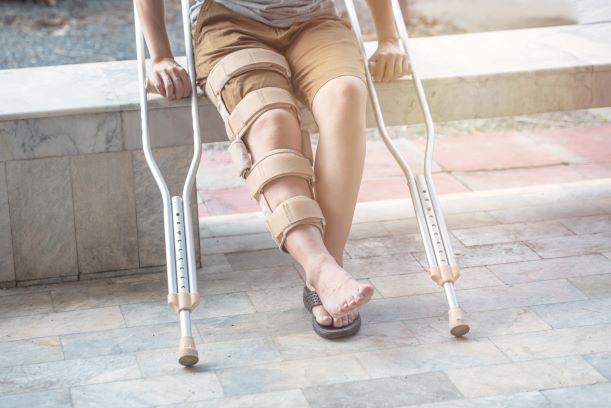
Non-weight bearing or no weight-bearing refers to the complete and total restriction of weight through a particular joint or area of the body. Simply put, patients who are on non-weight-bearing restrictions are not to place any amount of weight through their affected extremities.
This includes body weight or weight from other objects. Most of the time doctors or surgeons will allow the affected extremity to safely rest on a pillow or blanket as long as no force is applied.
A non-weight-bearing restriction is the most limiting restriction of all, and is most common in patients who have sustained a fracture, sprain, strain, or tear but have elected to be treated non-operatively.
The primary reason, as stated in the previous paragraphs, is to allow natural fusion and healing of the affected area to occur. Other factors that can determine a non-weight bearing restriction can include:
-Severity of injury
-Location of injury
-Patient’s age
-Comorbidities
-Recurrence of Injury
Some patients may also be placed on non-weight-bearing restrictions depending on the type of surgery performed. In most cases, a non-weight bearing restriction is coupled with the use of a brace, sling, or cast to immobilize the joint during the healing process.
During this process, doctors or surgeons will restrict range-of-motion to a particular area until proper healing has occurred.
Property of rehaballey.com
Weight-bearing restrictions and/or range-of-motion restrictions typically are maintained for 6 to 8 weeks however, your doctor or surgeon will determine when it is appropriate to lift these restrictions.
ALLEY TIPS: When moving around with non-weight bearing restrictions to the lower extremity, make sure to lift the extremity fully off of the floor. Even placing the extremity on the floor during mobility is prohibited.
If you are non-weight bearing through the upper extremity, it is important not to lean on any objects or mobility devices. In some cases, the doctor or surgeon may allow weight-bearing through the elbow only.
TOE-TOUCH/TOUCH-DOWN WEIGHT-BEARING

Toe-touch weight-bearing or touch-down weight-bearing is often used interchangeably. These (2) weight-bearing restrictions are similar to the non-weight-bearing restrictions with the same implications.
The only difference is that doctors or surgeons will allow patients to place their toe (toe-touch weight-bearing) or foot (touch-down weight-bearing) on the floor or ground for balance only.
Property of rehaballey.com
Most patients that I have worked with assume that since they can place their foot down on the floor during mobility, they can also place some weight through it. This couldn’t be further from the truth. Placing weight through the extremity is still prohibited.
One way that you can determine if you are placing too much weight through your extremity is to imagine that there was a cracked egg underneath your foot. If this egg were to crack even more while you are mobilizing or walking, then you are placing too much weight down on your foot. Demonstrations on how to walk using toe-touch/touch-down weight-bearing will be demonstrated in future videos.
PARTIAL WEIGHT-BEARING
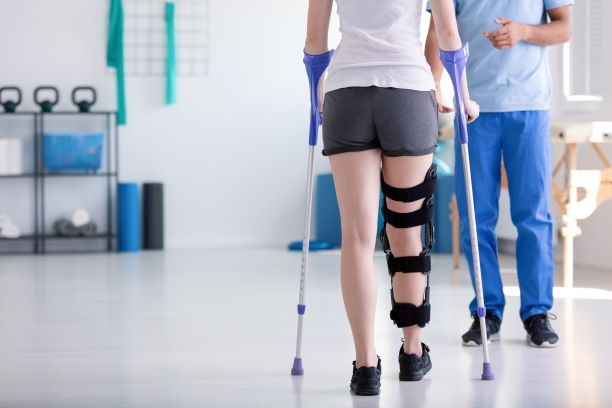
With partial weight-bearing restrictions, patients are now allowed to place a percentage of their body weight onto their affected extremity during mobility. This amount is usually indicated based on pounds of body weight, or more commonly a percentage of body weight.
The percentage of body weight allowed usually does not exceed 50% of the patient’s total body weight. The advantage of this type of weight restriction is it allows off-loading of the extremity enough to allow proper healing to occur while taking advantage of the bone growth that occurs during weight-bearing.
Although there are multiple reasons a doctor or surgeon will place patients on partial weight-bearing restrictions, the most common reason that I have seen as a therapist occurs in patients that have had recurring injuries or fractures.
Property of rehaballey.com
The disadvantage of partial weight-bearing restrictions is usually without the proper monitoring system, it is very difficult for patients to maintain on their own. Therapists will train patients on how to maintain their precautions but vary widely on the technique used.
Some of these techniques may not adequately monitor weight-bearing statuses across multiple activities. According to the article, Current Advances in Training Orthopaedic Patients to Comply with Partial Weight-Bearing Instructions the most common methods of training include:
- Tactile Feedback- Estimated weight-bearing by placing a foot under the patient’s foot.
- Scales- To determine pounds of weight applied to a joint while standing in place.
- Biofeedback Devices- Provide constant feedback (typically in the form of noises or beeps). It can be used while patients are walking.
- Force Plates-Provides in-depth weight-bearing during mobility, but are very expensive.
The article concludes that biofeedback devices may be the superior method to use, but further research is needed.
Along with using Durable Medical Equipment, another way doctors or surgeons can promote partial weight-bearing is with the use of braces, boots, post-op shoes, or other devices. In some cases using these devices may be all that is required; however, your doctor will give instructions based on your specific needs.
WEIGHT-BEARING AS TOLERATED

Weight-bearing, as tolerated, is the most common weight-bearing restriction that I see in the hospital or clinic setting. With this restriction, patients can place as much weight as they can tolerate through their extremity, allowing pain to be their ultimate guide.
As pain decreases, more weight can be placed through the affected extremity. A therapist will work with you on strategies to offload the extremity if the pain still persists.
There are certainly numerous benefits to being weight-bearing as tolerated as well. Multiple studies highlight the benefits of early weight-bearing and mobility, especially in older adults. One study titled, Increased Complications in Geriatric Patients with a Fracture of the Hip Whose Postoperative Weight-bearing is Restricted: An Analysis of 4918 Patients., showed deleterious effects in older patients with more weight-bearing restrictions vs. weight-bearing as tolerated.
The results showed that patients presented with major adverse events such as: delirium, infection, transfusion, increased length of stay in hospitals, and mortality as compared to patients who were allowed to weight-bear as tolerated as early as possible.
FULL WEIGHT-BEARING
This term is not as commonly used in the hospital or clinical setting and indicates that no weight-bearing restrictions are needed.
In closing, weight-bearing restrictions are recommended to allow for proper bone healing and/or bone growth. It is very important to follow these restrictions until removed by your doctor or surgeon.
For more assistance on durable medical equipment used to offload an extremity, you can visit the link to my affiliate store https://rehaballey.com/mobility-equipment-and-accessories/ which provides a catalog of product offers that I recommend. Again, I wish you well in your recovery. GOD BLESS YOUR ENDEAVORS!!

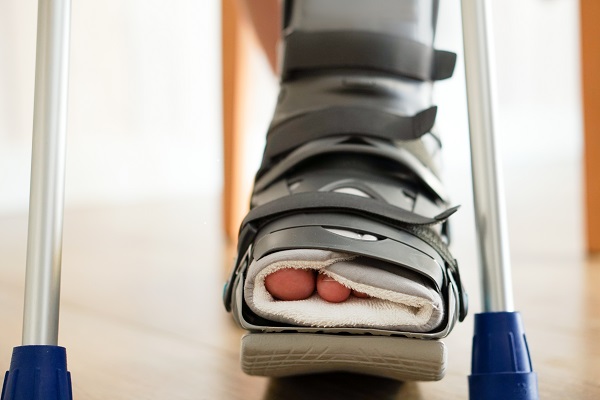

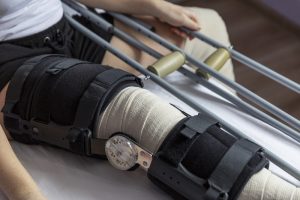
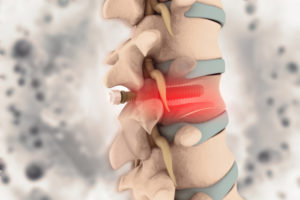

Pingback: Where to Buy Walkers for Seniors: A Review of (2) Main Types of Light-Weight Walkers for The Elderly – Rehab Alley